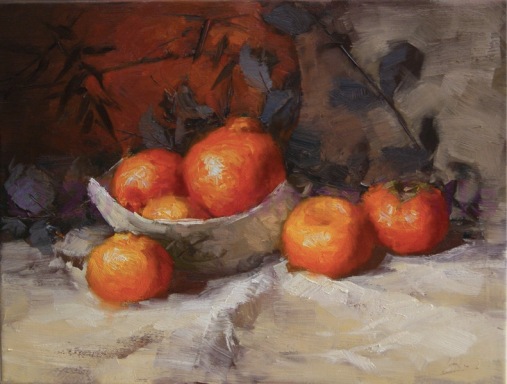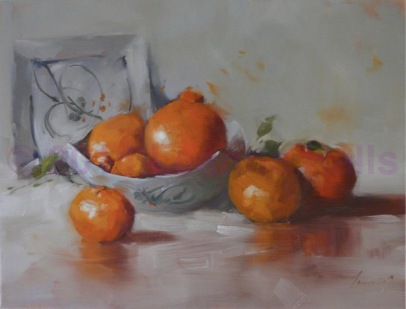
Like me, do you have a number of paintings dotting the walls and shelves of your studio that for some reason or other don’t work and haven’t connected with your viewers. Every time you walk pass them they torment you, challenging you to take another look and work out how to make them right. For months I had been avoiding this one painting that sat propped against my wall. Every time I looked at it, I would think, I need to reassess that painting. I need to work out how to make it better. How to get it to work. How to get it to connect with the viewer.
Finally after months of procrastination and avoidance, the painting made it back onto my easel.

I sat with it for a good 30 minutes before I lifted brush to canvas. During those 30 minutes I mindfully assessed the painting. As I mentioned in a previous blog, I always start a painting with a visual concept. So when I am assessing a painting that has gone wrong, I always start there. My first question is what is the concept for this painting? From there I then look at the different parts and assess whether or not they have fulfilled their role in the overall concept. By doing this I can see what parts are causing problems and the parts that are working. Once these parts are determined I can then assess them in relation to the whole. I start asking questions like – How does the colour, shape, tone, texture or edge relate to the surrounding areas and how does it need to be adjusted to make it correct so that it fulfils it place in the visual concept? By mindfully looking at the different parts of the painting and seeing their overall role in the visual concept, fixing a painting that has gone wrong becomes a whole lot simpler.
So the next time you hit a problem while working on a painting or if you pick up an old painting to fix it, remember to ask yourself the bigger question. What is my concept for this painting? And what role does this part of the painting that I am struggling with play in that? For example, is it a piece of dark that is to be used to hold the light? Or it a section of bright colour to move the eye? Or does it need to be flat so that the textured piece next to it comes to life? As you can see everything you put down on your canvas relates to the parts around it and to the overall concept of the painting.